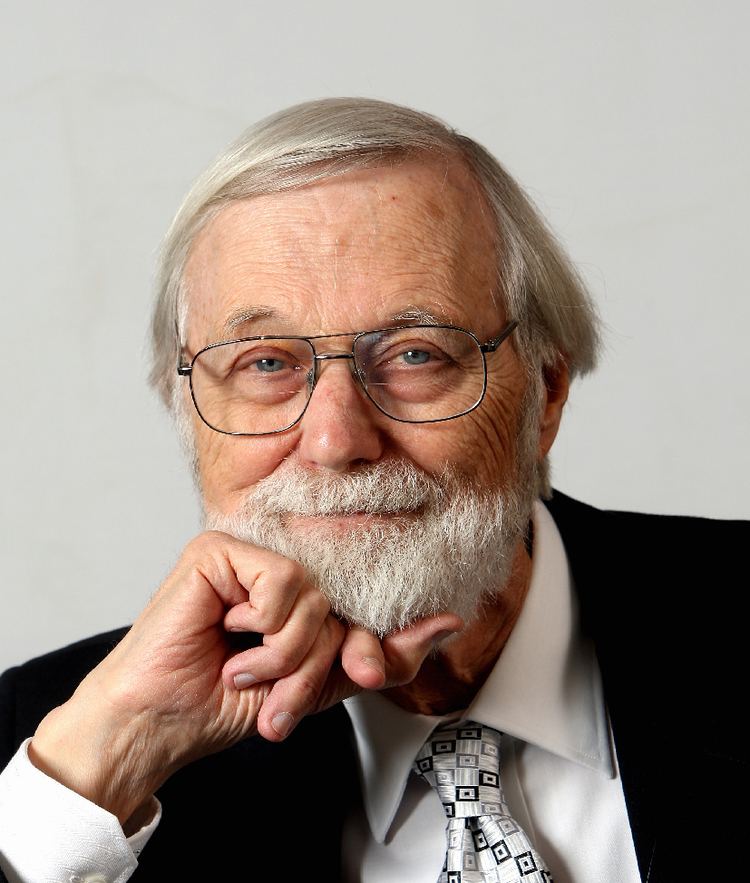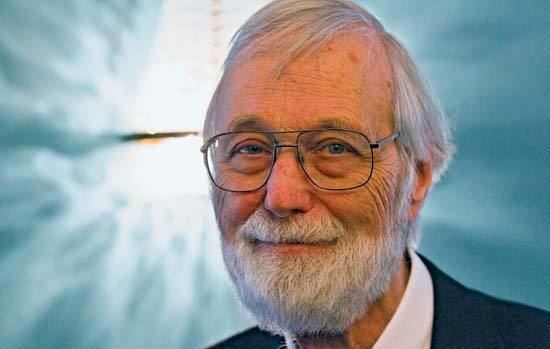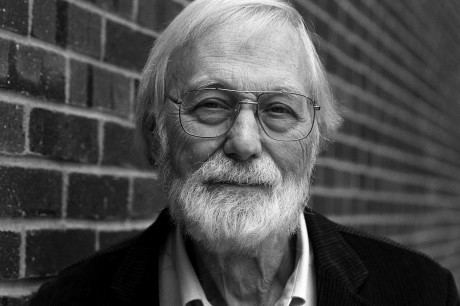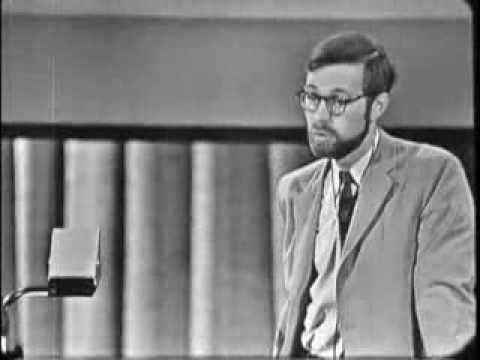Nationality American Name John Milnor Role Mathematician | Fields Mathematics | |
 | ||
Known for Exotic spheresFary–Milnor theoremMilnor's theorem Notable awards Putnam Fellow (1949, 1950)Sloan Fellowship (1955)Fields Medal (1962)National Medal of Science (1967)Leroy P Steele Prize (1982, 2004, 2011)Wolf Prize (1989)Abel Prize (2011) Doctoral students Books Topology from the differentia, Singular points of complex, Dynamics in one complex, Introduction to algebraic, Morse theory Similar People Niels Henrik Abel, Jean‑Pierre Serre, Michael Atiyah, Stephen Smale, Ralph Fox | ||
Icm2014 videoseries lc13 john milnor on aug15fri
John Willard Milnor (born February 20, 1931) is an American mathematician known for his work in differential topology, K-theory and dynamical systems. Milnor is a distinguished professor at Stony Brook University and one of the five mathematicians to have won the Fields Medal, the Wolf Prize, and the Abel Prize (along with Pierre Deligne, Jean-Pierre Serre, and John G. Thompson).
Contents
- Icm2014 videoseries lc13 john milnor on aug15fri
- Geometry of growth and form commentary on d arcy thompson john milnor
- Early life and career
- Research
- Awards and honors
- Publications
- References

Geometry of growth and form commentary on d arcy thompson john milnor
Early life and career

Milnor was born on February 20, 1931 in Orange, New Jersey. His father was J. Willard Milnor and his mother was Emily Cox Milnor. As an undergraduate at Princeton University he was named a Putnam Fellow in 1949 and 1950 and also proved the Fary–Milnor theorem. He continued on to graduate school at Princeton under the direction of Ralph Fox and submitted his dissertation, entitled "Isotopy of Links", which concerned link groups (a generalization of the classical knot group) and their associated link structure, in 1954. Upon completing his doctorate he went on to work at Princeton. He was a professor at the Institute for Advanced Study from 1970 to 1990.

His students have included Tadatoshi Akiba, Jon Folkman, John Mather, Laurent C. Siebenmann, and Michael Spivak. His wife, Dusa McDuff, is a professor of mathematics at Barnard College.
Research

One of his published works is his proof in 1956 of the existence of 7-dimensional spheres with nonstandard differential structure. Later, with Michel Kervaire, he showed that the 7-sphere has 15 differentiable structures (28 if one considers orientation).
An n-sphere with nonstandard differential structure is called an exotic sphere, a term coined by Milnor. Egbert Brieskorn found simple algebraic equations for 28 complex hypersurfaces in complex 5-space such that their intersection with a small sphere of dimension 9 around a singular point is diffeomorphic to these exotic spheres. Subsequently Milnor worked on the topology of isolated singular points of complex hypersurfaces in general, developing the theory of the Milnor fibration whose fiber has the homotopy type of a bouquet of μ spheres where μ is known as the Milnor number. Milnor's 1968 book on his theory inspired the growth of a huge and rich research area which continues to mature to this day.
In 1961 Milnor disproved the Hauptvermutung by illustrating two simplicial complexes which are homeomorphic but combinatorially distinct.
In 1984 Milnor introduced a definition of attractor [1]. The objects generalize standard attractors, include so-called unstable attractors and are now known as Milnor attractors.
Milnor's current interest is dynamics, especially holomorphic dynamics. His work in dynamics is summarized by Peter Makienko in his review of Topological Methods in Modern Mathematics:
It is evident now that low-dimensional dynamics, to a large extent initiated by Milnor's work, is a fundamental part of general dynamical systems theory. Milnor cast his eye on dynamical systems theory in the mid-1970s. By that time the Smale program in dynamics had been completed. Milnor's approach was to start over from the very beginning, looking at the simplest nontrivial families of maps. The first choice, one-dimensional dynamics, became the subject of his joint paper with Thurston. Even the case of a unimodal map, that is, one with a single critical point, turns out to be extremely rich. This work may be compared with Poincaré's work on circle diffeomorphisms, which 100 years before had inaugurated the qualitative theory of dynamical systems. Milnor's work has opened several new directions in this field, and has given us many basic concepts, challenging problems and nice theorems.
He was an editor of the Annals of Mathematics for a number of years after 1962. He has written a number of books.
Awards and honors
In 1962 Milnor was awarded the Fields Medal for his work in differential topology. He later went on to win the National Medal of Science (1967), the Lester R. Ford Award in 1970 and again in 1984, the Leroy P Steele Prize for "Seminal Contribution to Research" (1982), the Wolf Prize in Mathematics (1989), the Leroy P Steele Prize for Mathematical Exposition (2004), and the Leroy P Steele Prize for Lifetime Achievement (2011) "...for a paper of fundamental and lasting importance, On manifolds homeomorphic to the 7-sphere, Annals of Mathematics 64 (1956), 399–405". In 1991 a symposium was held at Stony Brook University in celebration of his 60th birthday.
Milnor was awarded the 2011 Abel Prize, for his "pioneering discoveries in topology, geometry and algebra." Reacting to the award, Milnor told the New Scientist "It feels very good," adding that "[o]ne is always surprised by a call at 6 o'clock in the morning." In 2013 he became a fellow of the American Mathematical Society, for "contributions to differential topology, geometric topology, algebraic topology, algebra, and dynamical systems".
